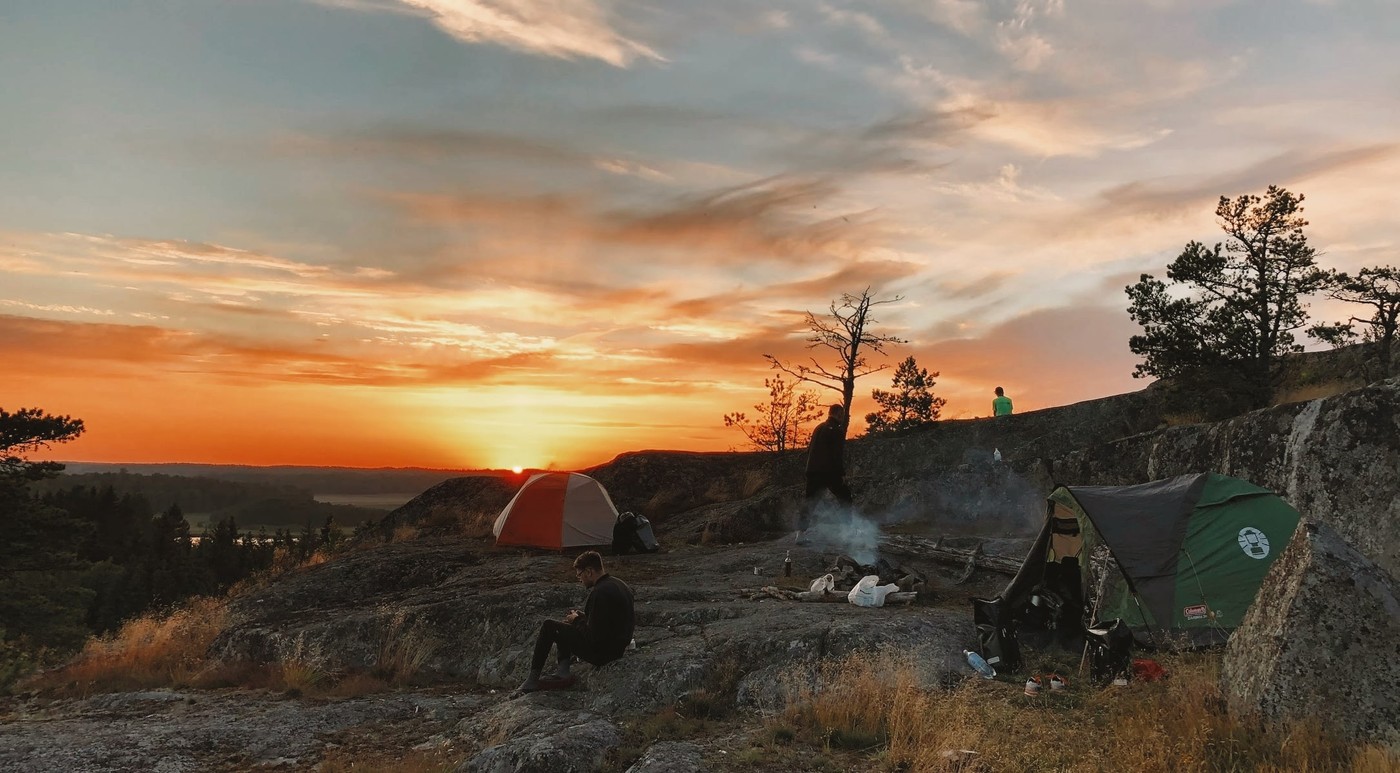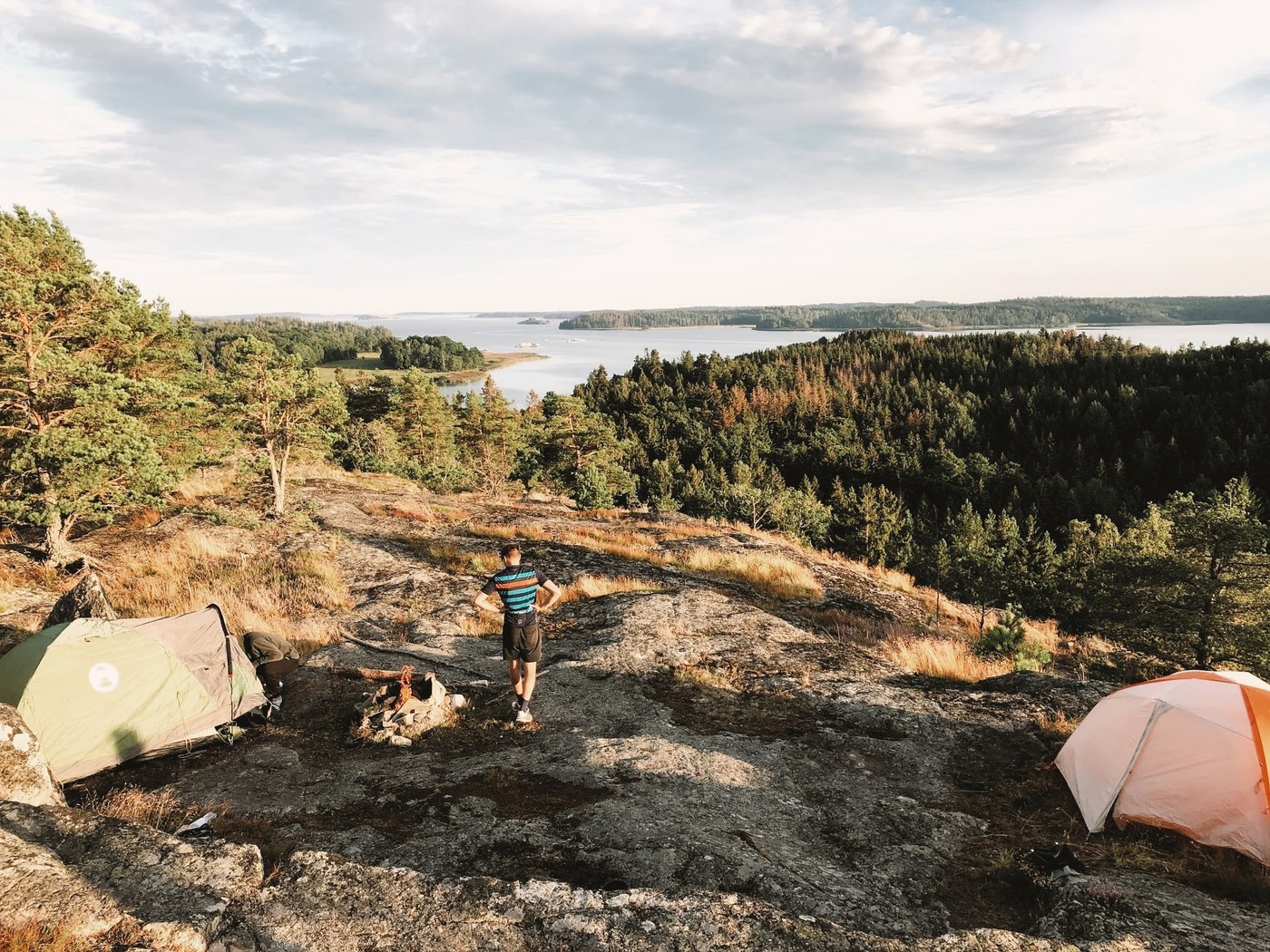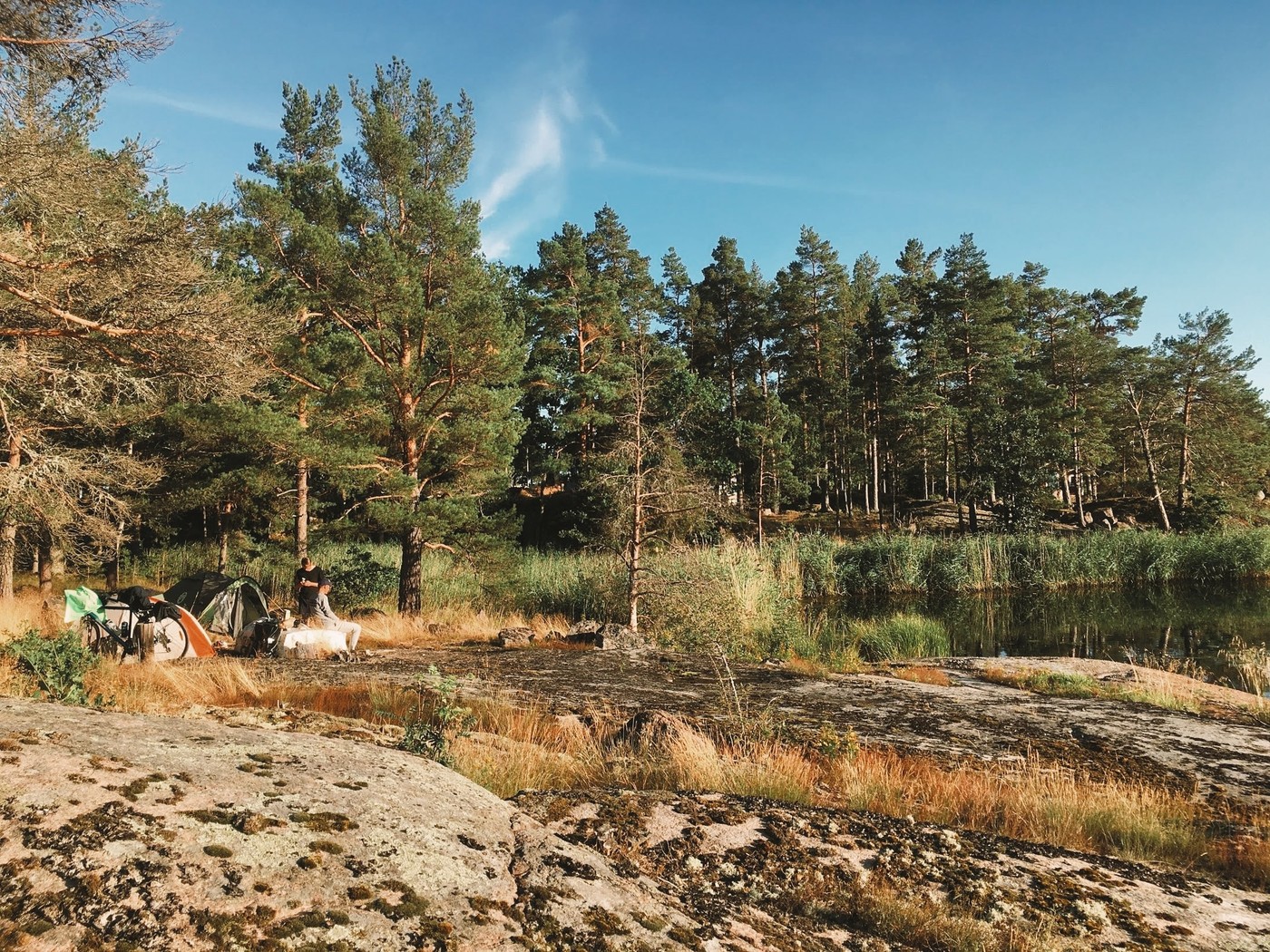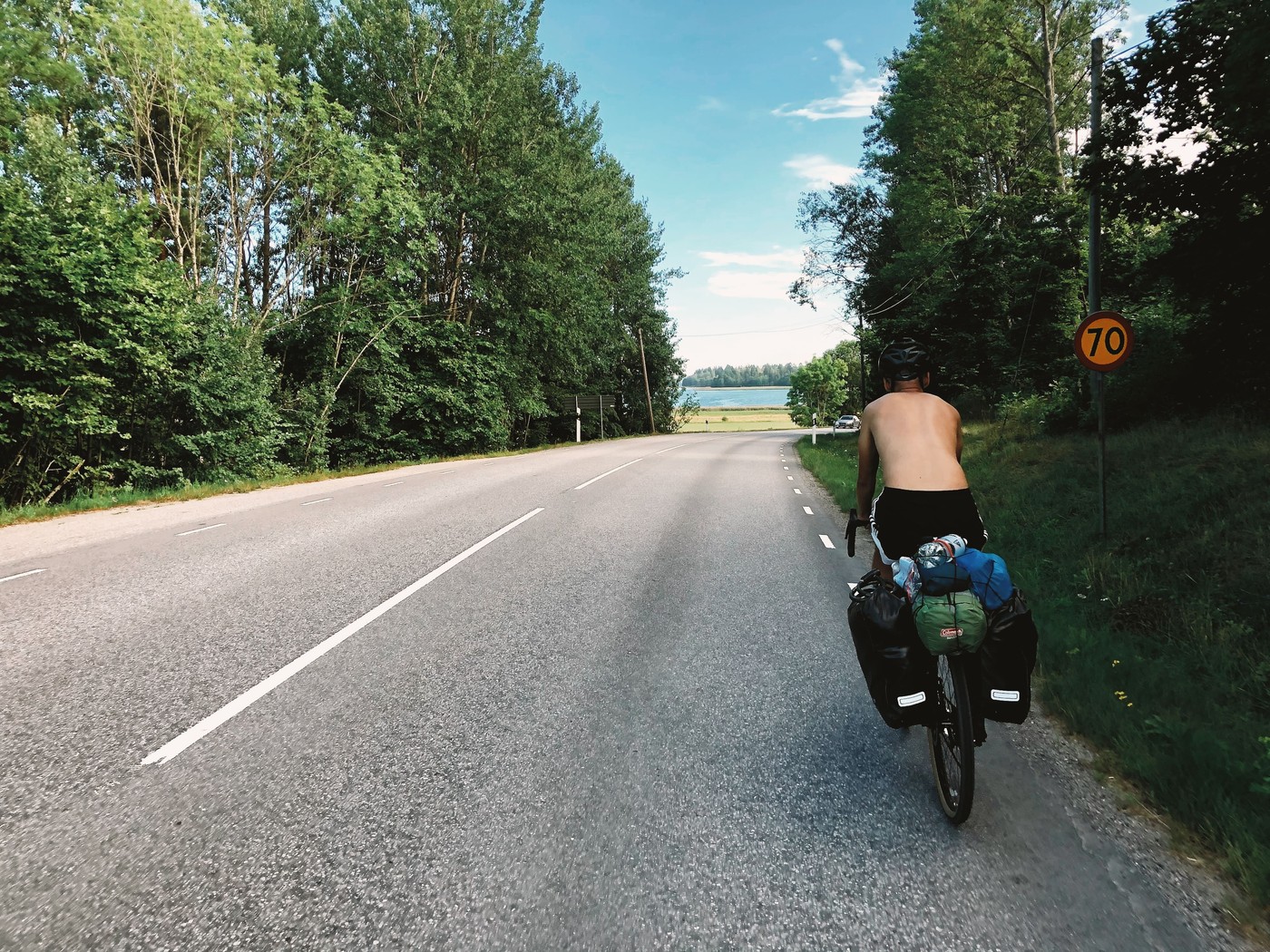Bikepacking & wild camping in Sweden
Blog
August 25, 2020 • ☕️ 3 min read • 12
Earlier this summer my friends and I packed our bikes, took a train to Gdańsk and boarded a ferry headed for Nynäshamn, Sweden. After an 18-hour cruise, our Swedish bike packing adventure began.
We cycled along EuroVelo 10 - the Baltic Sea Cycle Route. It follows endless tarmac and gravel roads along the Baltic Sea. The Swedish coastline includes beaches, cliffs, woodland, ports and marinas as well as countless large and small islands - dream scenery for bikepackers. On this journey, we’ve lost count of how many times we stopped to swim in the warm summer lakes and cold Baltic Sea. Also, with Allemansrätt, a Swedish law that allows everyone to roam and camp where they please, we were spoilt with campsite choices. Quite a few times friendly locals helped us find camping spots.
Route
EuroVelo 10
We followed the EuroVelo 10 - Baltic Sea Cycle Route, southwards from Stockholm, the country’s vibrant capital, to Malmö, mostly along the sea.
We cycled from Stockholm (Nynäshamn port) to Ystad, the point of departure for our ferry back home. The bikepacking journey took 8 days. We averaged 115km a day. The route was hilly with many short up- and downhills. For the first 4 days we averaged more than 1000m elevation gain per day. It was quite straining especially when cycling on a fully loaded bike - we carried around 20kg of equipment and supplies. The route became flatter and easier as we approached Kalmar and Karlskrona. The wind was not a big problem as for the majority of the route we were riding covered by trees.
A gravel bike is advisible as much of the route leads along gravel and tarmac roads. 35mm-42mm tyres worked great for us.
Route Stats

Baltic Sea Cycle Route
- Distance: 895km
- Elevation: 5900m
- Time: 8 days
- Date: Jul 2020
Wild Camping
“The Everyman’s Right” in Sweden allows people to camp anywhere in the wilderness as long as it is not private property. It makes bikepacking affordable in an otherwise expensive country. We camped in a wild camp for 8 days, usually very close to the Baltic sea or some lake. You trade views and proximity to Swedish nature for utilities like showers or toilets. Swimming in lakes and having access to the bathroom at gas stations can make up for all the pain.
Wilderness Shelters
Sweden also offers a wide variety wilderness shelters throughout the country. It is possible to spend the night there for free. Usually, you will an open fireplace, tables and benches. Local people told us it was fine to set up a tent next to the hut. On a cold, windy night the hut might not be enough to protect you from the wind.
Photo gallery
Wild Camping Spots
| GPS trace | Camping spot |
|---|---|
| Day 1 | We spent the night near Tullgarn on a rocky hill. Amazing spot with views. You have to leave the bike at the bottom and carry your equipment on foot: approximate GPS location. |
| Day 2 | Camped at Ensjön lake. |
| Day 3 | Camped near Gamleby at the seaside. |
| Day 4 | We finished near Oskarshamn, camped at the seaside. It’s quite hard to find a good spot close to the city. It’s better to go a bit further away. |
| Day 5 | Camped in the forest near Torsås. |
| Day 6 | Camped in the shelter in Järnavik: approximate location. |
| Day 7 | Camped in the shelter in Kivik: approximate location. |
| Day 8 | Night on the ferry 🛳 |











